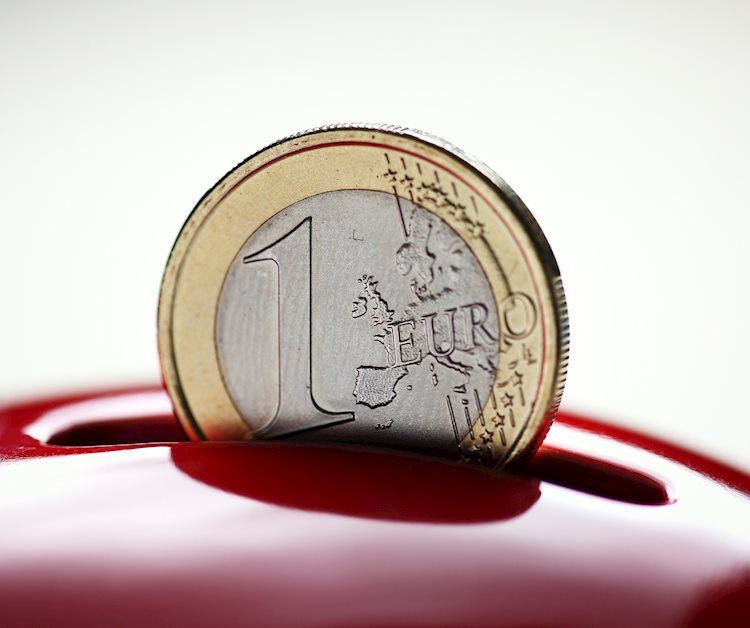- The Euro remains under pressure near 1.0840 against the US Dollar.
- European stocks remain on track to close the day with decent gains.
- US Producer Prices contracted more than expected in October.
The Euro (EUR) maintains its bearish stance against the US Dollar (USD), leading to a corrective decline in EUR/USD to daily lows near 1.0840 on Wednesday.
Conversely, the US Dollar sees a marked recovery, reclaiming the 104.30 level as indicated by the USD Index (DXY). This resurgence in the Greenback coincides with an improvement in US yields across different maturities following Tuesday’s CPI-driven retracement.
A glimpse of Tuesday’s session suggests that the publication of weaker-than-expected US CPI reignited speculation of potential interest rate cuts by the Fed, most likely around the summer of 2024. Furthermore, this renewed view emerges as a potential source of weakness for the Dollar going forward.
In the domestic calendar, the European Commission’s (EC) Autumn Forecasts now see the economy of the Eurozone expanding 0.6% this year (from 0.8%) and 1.2% in 2024, while inflation is projected at 5.6% in 2023 and 3.2% in the next year. Still in the region, the Balance of Trade showed a €10B surplus in September, while Industrial Production contracted 6.9% from a year earlier.
In the US, Producer Prices contracted at a monthly 0.5% in October and rose 1.3% YoY, while headline Retail Sales shrank 0.1% MoM in October and the NY Empire State Manufacturing Index improved to 9.1 for the current month.
Daily digest market movers: Euro’s upside falters just ahead of 1.0900
- The EUR’s rebound runs out of steam ahead of 1.0900 against the USD.
- US and German yields regain upside traction across the curve.
- Investors anticipate that the Fed could cut rates in June-July 2024.
- The ECB is expected to extend its pause well into next year.
- FX intervention concerns remain well in place around USD/JPY.
- The European Commission trims the 2023 GDP forecast for the euro area.
- US Retail Sales contracted less than estimated in October.
- UK inflation figures surprised to the downside in October.
- China’s Retail Sales, Industrial Production came in above expectations.
Technical Analysis: Euro shifts its outlook to bullish above the 200-day SMA
EUR/USD comes under some corrective decline following a move to new highs near 1.0880 on Wednesday.
Next on the upside for EUR/USD emerges the weekly high of 1.0945 (August 30) ahead of the psychological threshold of 1.1000. The surpass of this region could open the door to a visit to the August top of 1.1064 (August 10) and another weekly peak of 1.1149 (July 27), all preceding the 2023 high of 1.1275 (July 18).
Occasional bouts of weakness could prompt the pair to challenge transitory support at the 55-day SMA at 1.0639, prior to the weekly low of 1.0495 (October 13) and the 2023 low of 1.0448. (October 15).
Looking at the broader picture, while above the 200-day SMA at 1.0802, the pair’s outlook should remain constructive.
(This story was corrected on November 15 at 11:23 GMT to say that EUR/USD reached new highs near 1.0880, not lows).
Euro FAQs
The Euro is the currency for the 20 European Union countries that belong to the Eurozone. It is the second most heavily traded currency in the world behind the US Dollar. In 2022, it accounted for 31% of all foreign exchange transactions, with an average daily turnover of over $2.2 trillion a day.
EUR/USD is the most heavily traded currency pair in the world, accounting for an estimated 30% off all transactions, followed by EUR/JPY (4%), EUR/GBP (3%) and EUR/AUD (2%).
The European Central Bank (ECB) in Frankfurt, Germany, is the reserve bank for the Eurozone. The ECB sets interest rates and manages monetary policy.
The ECB’s primary mandate is to maintain price stability, which means either controlling inflation or stimulating growth. Its primary tool is the raising or lowering of interest rates. Relatively high interest rates – or the expectation of higher rates – will usually benefit the Euro and vice versa.
The ECB Governing Council makes monetary policy decisions at meetings held eight times a year. Decisions are made by heads of the Eurozone national banks and six permanent members, including the President of the ECB, Christine Lagarde.
Eurozone inflation data, measured by the Harmonized Index of Consumer Prices (HICP), is an important econometric for the Euro. If inflation rises more than expected, especially if above the ECB’s 2% target, it obliges the ECB to raise interest rates to bring it back under control.
Relatively high interest rates compared to its counterparts will usually benefit the Euro, as it makes the region more attractive as a place for global investors to park their money.
Data releases gauge the health of the economy and can impact on the Euro. Indicators such as GDP, Manufacturing and Services PMIs, employment, and consumer sentiment surveys can all influence the direction of the single currency.
A strong economy is good for the Euro. Not only does it attract more foreign investment but it may encourage the ECB to put up interest rates, which will directly strengthen the Euro. Otherwise, if economic data is weak, the Euro is likely to fall.
Economic data for the four largest economies in the euro area (Germany, France, Italy and Spain) are especially significant, as they account for 75% of the Eurozone’s economy.
Another significant data release for the Euro is the Trade Balance. This indicator measures the difference between what a country earns from its exports and what it spends on imports over a given period.
If a country produces highly sought after exports then its currency will gain in value purely from the extra demand created from foreign buyers seeking to purchase these goods. Therefore, a positive net Trade Balance strengthens a currency and vice versa for a negative balance.
